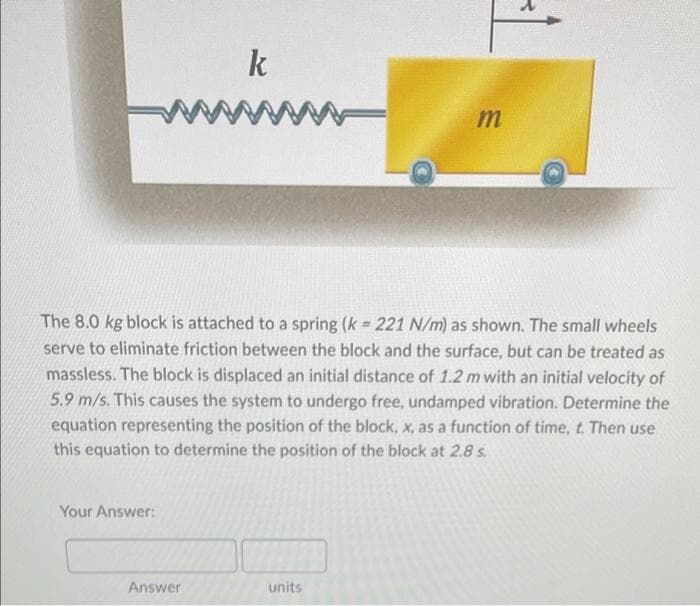k m The 8.0 kg block is attached to a spring (k 221 N/m) as shown. The small wheels serve to eliminate friction between the block and the surface, but can be treated as massless. The block is displaced an initial distance of 1.2 m with an initial velocity of 5.9 m/s. This causes the system to undergo free, undamped vibration. Determine the equation representing the position of the block, x, as a function of time, t. Then use this equation to determine the position of the block at 2.8 s.
k m The 8.0 kg block is attached to a spring (k 221 N/m) as shown. The small wheels serve to eliminate friction between the block and the surface, but can be treated as massless. The block is displaced an initial distance of 1.2 m with an initial velocity of 5.9 m/s. This causes the system to undergo free, undamped vibration. Determine the equation representing the position of the block, x, as a function of time, t. Then use this equation to determine the position of the block at 2.8 s.
Related questions
Question
2

Transcribed Image Text:k
m
The 8.0 kg block is attached to a spring (k 221 N/m) as shown. The small wheels
serve to eliminate friction between the block and the surface, but can be treated as
massless. The block is displaced an initial distance of 1.2 m with an initial velocity of
5.9 m/s. This causes the system to undergo free, undamped vibration. Determine the
equation representing the position of the block, x, as a function of time, t. Then use
this equation to determine the position of the block at 2.8 s.
Your Answer:
Answer
units
Expert Solution
This question has been solved!
Explore an expertly crafted, step-by-step solution for a thorough understanding of key concepts.
Step by step
Solved in 3 steps with 2 images
